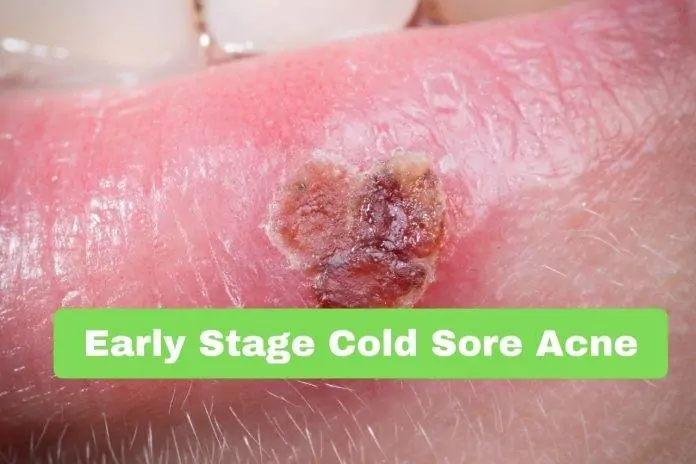If you have ever been infected with an early stage cold sore acne, you know how painful it can be. However, it is possible to treat this condition and keep your symptoms at bay. There are a few things you should know about the disease, including what triggers it, how you can prevent it, and the types of treatments available.
Common triggers
When it comes to acne, there are two skin conditions that are quite similar: pimples and cold sores. Both can be painful and may cause social embarrassment. It is important to understand the differences between the two in order to treat them properly.
Cold sores are caused by the HSV-1 virus. These viruses are very contagious and can be passed through direct skin contact, sharing objects, and through saliva. This is why it is a good idea to keep your hands clean and avoid touching the sore.
Cold sores usually appear on the lips, but they can also appear on the face and other areas of the body. They are more like blisters than zits. As the sores heal, the fluid within the blisters may ooze or bleed.
Pimples are common skin problems, especially among adolescents. They occur when the skin pores become clogged with sebum and dead skin cells. The bacteria that causes them then grows in the blocked pore. Often, the bacteria is accompanied by white pus.
Treatment options
If you’re suffering from early stage cold sore acne, it’s important to understand your skin condition and choose the right treatment. Choosing the right treatment can help your skin heal faster and clear up your skin permanently.
First of all, you should know that the cold sore virus is contagious. It is more likely to be spread during outbreaks, but it can also be passed on to other people when they are not infected with the virus.
Cold sores are characterized by tiny red blisters that form a cluster on your lips or nostrils. These blisters can rupture, oozing fluid.
Symptoms of an outbreak include pain and swelling. Cold sores usually heal by themselves, though they may reoccur. However, if they’re causing significant discomfort, you should see a doctor.
In severe cases, a doctor may need to perform a physical exam, take a sample of the lesion for testing, or prescribe a variety of treatments. Depending on your particular condition, your doctor might recommend taking an antiviral medication to reduce the severity of the outbreak and speed up the healing process.
Symptoms
In this article we’ll look at some common symptoms of early stage cold sore acne. These include inflammation and pain. If you notice these symptoms in yourself, it is important that you take steps to prevent an outbreak from forming.
Cold sores occur when the herpes simplex virus is present in the skin. It is a highly contagious disease that can spread to other people. However, most cases go away on their own. You should consult a doctor if you have an outbreak, as repeated infections can cause scarring.
Pimples are another skin condition that can occur when the skin pores are clogged with oil and bacteria. They can happen anywhere on the body with hair follicles.
A pimple is a small, red, raised bump on the skin. Pimples usually form on the lips, cheeks, or nose. Some people may experience acne during their menstrual cycle. Symptoms of acne on the face can include pain and tenderness.
Prevention
Cold sores, also known as oral herpes, are a painful skin disease that are caused by the herpes simplex virus (HSV). They are small, fluid-filled blisters that usually appear on the lips, nostrils, or other parts of the face.
The virus can spread easily when the blisters break open, releasing the fluid. You can also transfer the virus through sharing food, oral sex, or cosmetics. In some cases, the virus can even spread to other parts of the body.
Most cold sores take about two weeks to heal. However, if you have an outbreak that lasts more than a week, you should see a physician. A doctor can prescribe antiviral medications to help reduce the severity of the outbreak and prevent future outbreaks.
Symptoms of cold sores include itching, burning, and tingling. If you’ve had an outbreak, you should also look for signs of infection such as a fever.
When a cold sore is first developing, it may look like a pimple. This can occur spontaneously or it can be brought on by certain stimuli.




